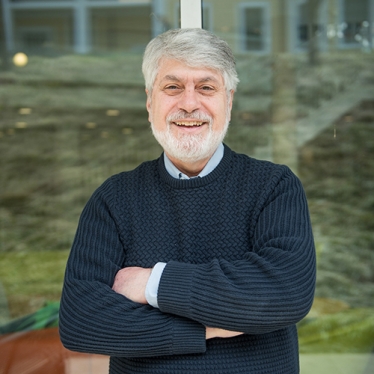Richard Olivo
Professor Emeritus of Biological Sciences

Contact & Office Hours
Sabin-Reed Hall 454
413-585-3822
Education
Ph.D., A.M., Harvard University
A.B., Columbia University
Biography
Richard Olivo's initial interests were in the neurobiology of simple systems, including the control of eye movements in crayfish and their modulation by behavioral arousal. In recent years, he has shifted his emphasis to teaching and the use of instructional technology. His simulation of retinal ganglion cell responses (MacRetina) won an award from EDUCOM, and his online laboratory manual for neurophysiology is also used by other colleges. Olivo's interest in educational technology led him to spend a sabbatical year at MIT in the Center for Educational Computing Initiatives in 1993–94. From 1996 to 2009, he served as an associate director of Harvard's Derek Bok Center for Teaching and Learning (while continuing to teach neurophysiology at Smith); at Harvard, he coached faculty and led efforts to improve teaching with technology. He was project director for the Society for Neuroscience's development of ERIN, a website to support higher education, and he has organized annual workshops for the society on teaching neuroscience since 2005. Olivo received the Society's Award for Education in 2014, and two awards from Faculty for Undergraduate Neuroscience: Educator of the Year in 2005 and a Career Achievement Award in 2012.
Representative Publications
Olivo, R. F., Burdo, J.R., Calin-Jageman, R., Grisham, W.E., Linden, M.L., Rosenberg, R.L., Symonds, L.L., Thornton, J.E. 2015. "ERIN: A Portal to Resources for Higher Education in Neuroscience." Journal of Undergraduate Neuroscience Education 13(3): A126-A130.
Olivo, R. F. 2012. "Collaborative Online Writing Assignments to Foster Active Learning." Journal of Undergraduate Neuroscience Education 11(1): A82-A89.
Olivo, R. F. 2011. "Bridging Old and New: Video Guides to Assigned Readings." EDUCAUSE Quarterly 34(4).
Olivo, R. F. 2003. "An online lab manual for neurophysiology." Journal of Undergraduate Neuroscience Education 2(1): A16-A23.
